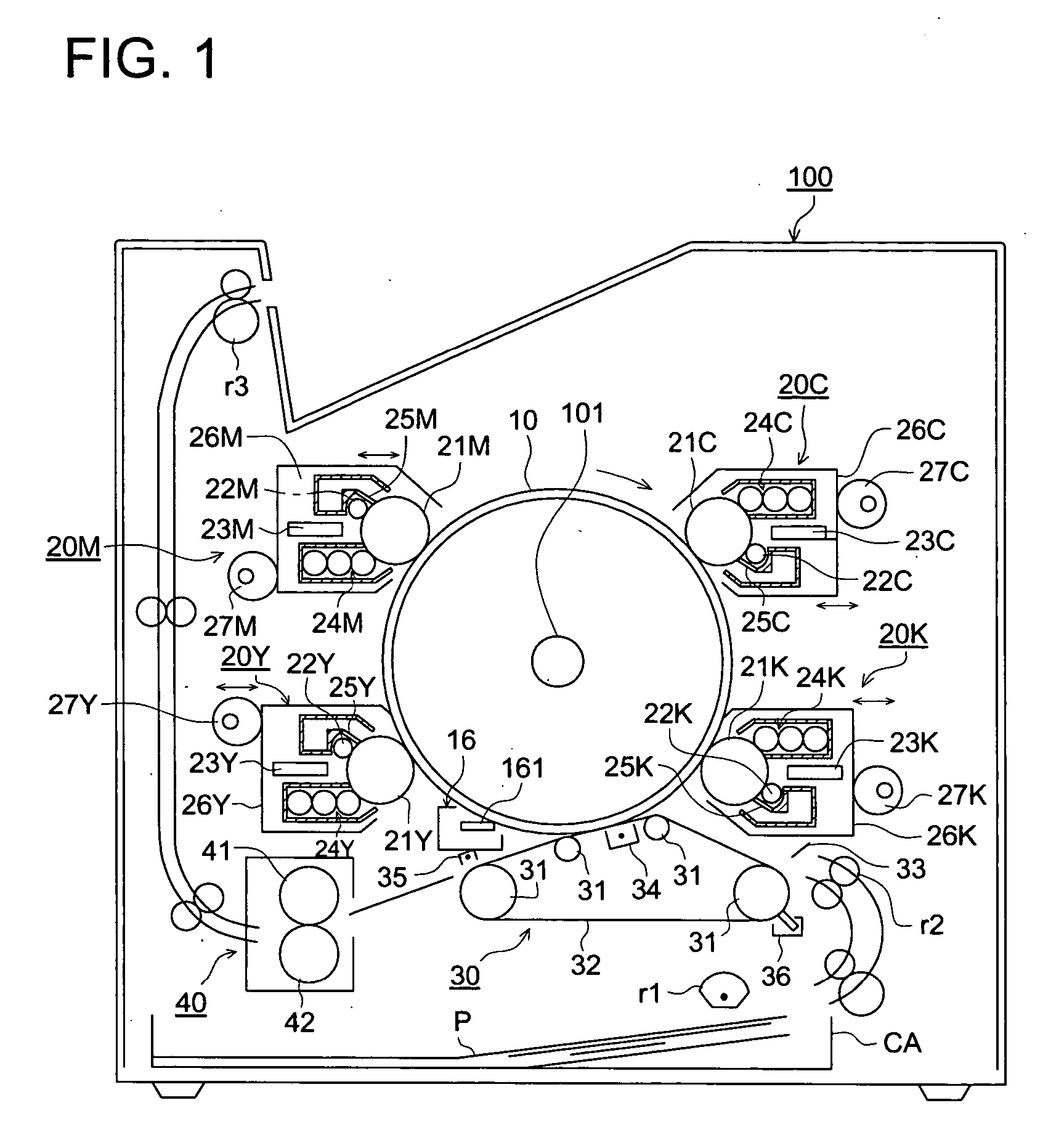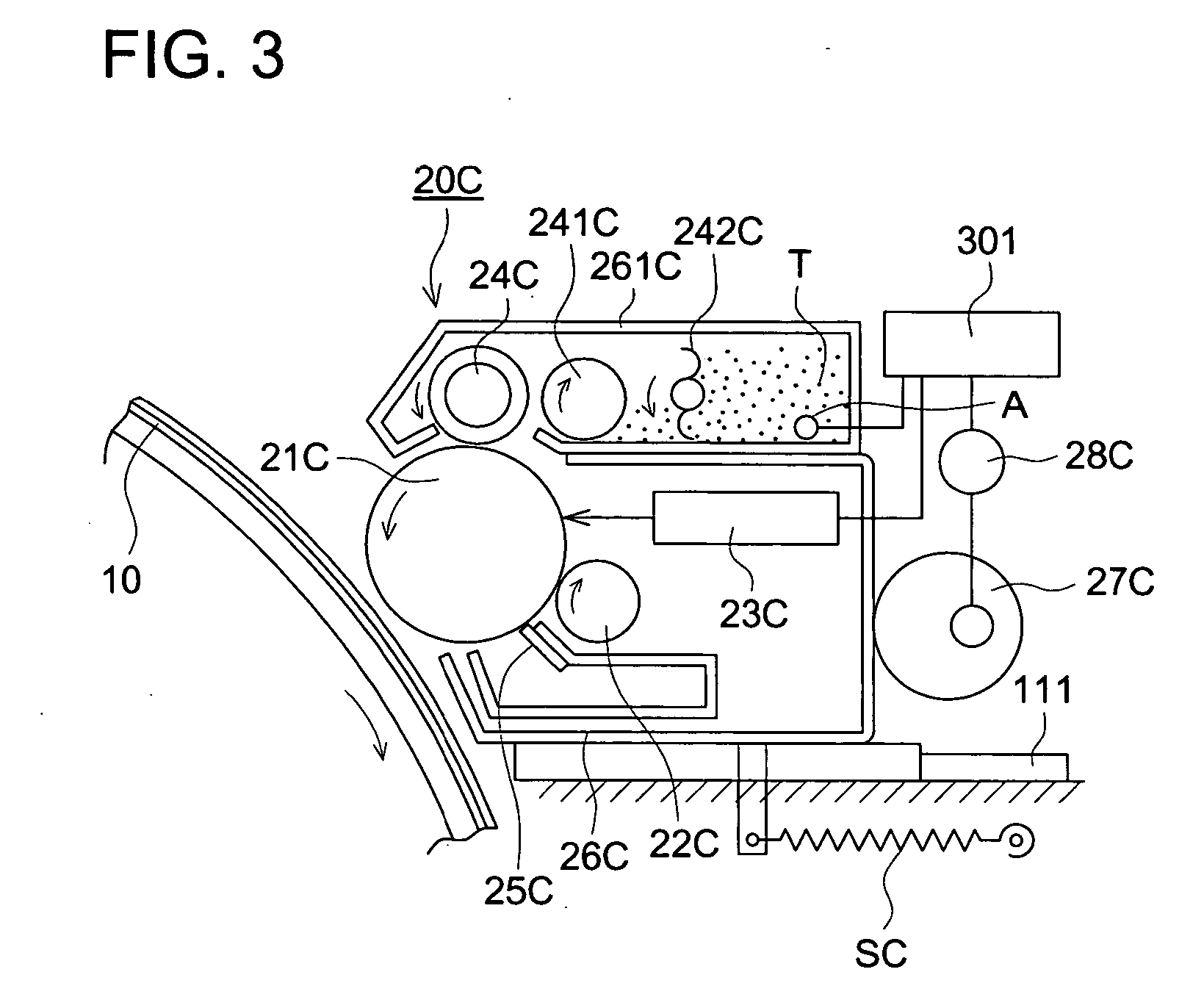Organic photoreceptor, image forming apparatus, image forming method and image forming unit
an image forming apparatus and organic technology, applied in the direction of electrographic process, instruments, corona discharge, etc., can solve the problems of color shading or color misalignment, organic photoreceptors are not fully sufficient solutions for photoreceptor durability, increase in image defects such as fogging and black spots, etc., to suppress the degradation of image density, improve the durability of organic photoreceptors of thin layer type, and improve image sharpness
- Summary
- Abstract
- Description
- Claims
- Application Information
AI Technical Summary
Benefits of technology
Problems solved by technology
Method used
Image
Examples
example 1
Preparation of Photoreceptors Groups 1-3
[0285] The following liquid coating composition was prepared and coated on a cleaned cylindrical aluminum base member with a diameter of 30 mm, by a dip coating method, to form an under coat layer.
[0286] An under coat layer having organic segment component, inorganic segment component and antioxidation stractural component of a thickness of 4.0 μm was prepared as follows: [0287] (i) The following materials were mixed and well stirred:
[0288] Solution of Organic Segment Component A
(Solution for vinyl polymer A having a hindered100 partsamine group and being Cyril modified)Methyl trimethoxy silane 70 partsDimethyl dimethoxy silane 30 partsMinute particles (Anatase type titanium oxide(number100 partsaverage particle diameter of primary particles: 35 nm, primarysurface treantment: silica-alumina treatment and secondarysurface treatment: methylhydrodien poly siloxyane treatment)butyl alcohol100 partsbutylcellosolve 75 partsdi-i-propoxy ethyl a...
PUM
| Property | Measurement | Unit |
|---|---|---|
| surface potential | aaaaa | aaaaa |
| thickness | aaaaa | aaaaa |
| thickness | aaaaa | aaaaa |
Abstract
Description
Claims
Application Information
 Login to View More
Login to View More - R&D
- Intellectual Property
- Life Sciences
- Materials
- Tech Scout
- Unparalleled Data Quality
- Higher Quality Content
- 60% Fewer Hallucinations
Browse by: Latest US Patents, China's latest patents, Technical Efficacy Thesaurus, Application Domain, Technology Topic, Popular Technical Reports.
© 2025 PatSnap. All rights reserved.Legal|Privacy policy|Modern Slavery Act Transparency Statement|Sitemap|About US| Contact US: help@patsnap.com



